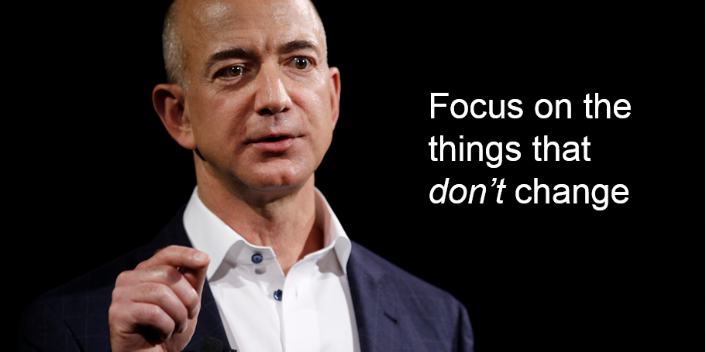The appeal of software products is easy to understand: economies of scale; a platform for ongoing innovation and interoperability; community effects; and so on.
 Their viability, however, is entirely predicated on customers having convergent needs. Workday’s ‘power of one’. Jeff Bezos’s advice to product businesses.
Their viability, however, is entirely predicated on customers having convergent needs. Workday’s ‘power of one’. Jeff Bezos’s advice to product businesses.
To be polite, our industry is not renowned for standardization, certainly not of admin work practices!
The resulting wastefulness increases incumbents’ vulnerability to potential new entrants.
The vista of ossified legacy infrastructure must look like a soft target. Whether Google, Amazon or someone else, when they come they will be well-funded, tech-savvy, platform-minded, and not remotely interested in re-creating any new versions of the incumbents’ arcane and disparate internal practices.
Transport economics has the concept of the “last mile problem”:
 Transporting goods via freight rail networks and container ships is often the most efficient and cost-effective manner of shipping.
Transporting goods via freight rail networks and container ships is often the most efficient and cost-effective manner of shipping.
However, when goods arrive at a high-capacity freight station or port, they must then be transported to their final destination.
The last leg of the supply chain is often less efficient, comprising up to 28% of the total cost to move goods. This has become known as the “last mile problem”.
Similarly, in software, the product can only get you so far and then you are on your own.
And the last mile is a very different place. Labor economics take over from product economics. The cost of ownership model changes completely.
Appropriate for areas of true differentiation. Only.
The proximity of the port to the various destinations is not arbitrarily chosen by any vendor. It is a property of the industry itself, a sort of measure of success in convergence and in efficient division of labor.
Product vendors can and do invest to mitigate the last mile problem, to accommodate difference via workflow and rules engines, etc. However, those same vendors sadly tend to go out of business if they offer product commercials beyond the port.
More and more, insurance leaders get all this.
They understand that legacy replacement is a rare and precious opportunity for a break with the past. They understand the contradictions inherent in asking for ‘100% product’ solutions without opening up all work practices for re-invention.
 They want freedom, not a change of jailor.
They want freedom, not a change of jailor.
And work practices are fundamentally what this comes down to.
The era is gone when technology was something in the background. Software now addresses almost all aspects of working life. It creates the environments that users work in.
Previous eras achieved a level of cross-carrier convergence in relation to internal structures of data representation, often through the propagation of successful core systems and their derivatives. The gains were quickly lost at the business layer, however, as energetic ‘domestication’ by individual firms took its course.
This must be the focus for the next phase.
A leaner and less fragile industry demands a new division of labour in core systems, one in which insurers apply a much lighter layer of differentiation on top of a widely standardized base. This in turn demands that insurers make possibly far-reaching change to ‘ways of doing’. This could be voluntary or imposed…
Can forward-looking insurance leaders defeat legacy mindsets and internal vested interests to overcome the ‘narcissism of small differences’ before they are made irrelevant?
What do you think?


